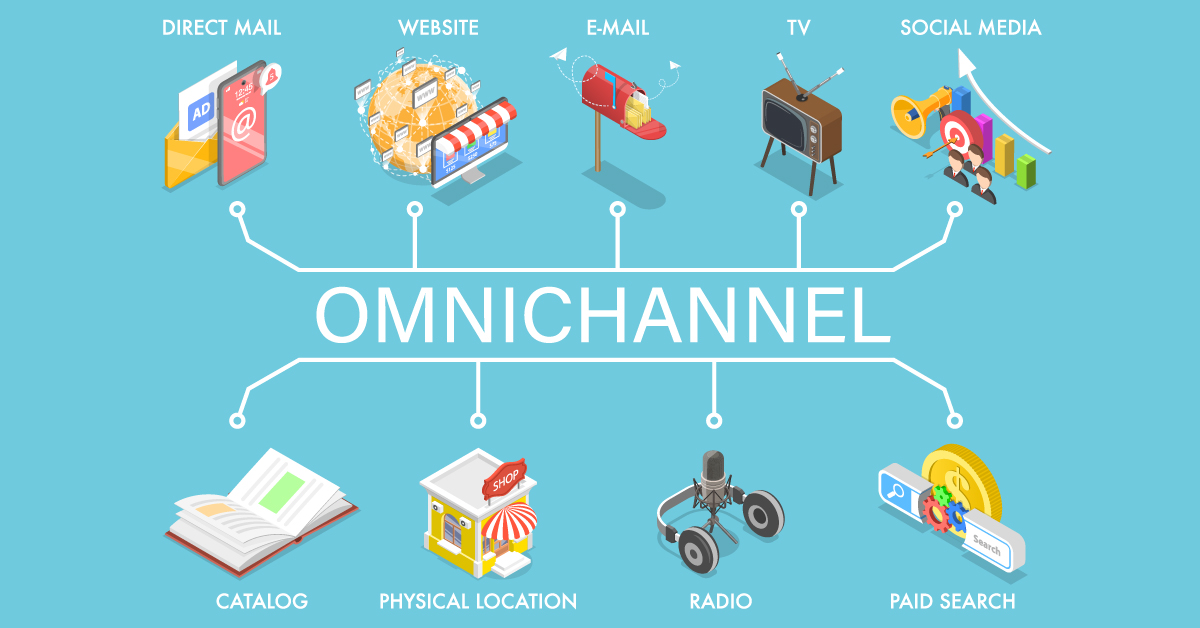Gone are the days where customers’ only option was to pick up the phone and wait on hold until a customer service representative answered their call.
According to Google Research, 98% of Americans switch between devices throughout the day. Nowadays, customers expect to be able to interact with their favorite brands on their preferred channel, whether that’s via the phone, email, live chat, or social media.
The worlds of eCommerce, social selling, and brick-and-mortar stores are becoming increasingly intertwined. As a result, businesses must adapt to consumer needs to stay competitive and deliver the best possible customer experiences.
Three distinct approaches have evolved from the proliferation of digital channels and devices, namely: multichannel, crosschannel, and omnichannel. Although they might sound similar, there are significant differences between each approach and the business benefits they yield.
So, which one is the best option for your business? Let’s find out.
What are modern marketing channels?
What do we mean when we talk about marketing channels? Most businesses use a combination of direct and indirect online and offline channels to connect with their audience. Choosing the right channels is crucial to reaching your audience where they spend their time.
The most common channels marketers are investing in include:
- Content marketing and SEO strategy
- Email marketing
- Influencer marketing
- Pay-per-click advertising
- Social media
- Video marketing
- Word-of-mouth and referrals
Whether businesses decide to focus on a select few or take a holistic approach and establish a presence across multiple channels depends on their resources, business goals, and strategies. Let’s check out the definitions of each approach and what they involve.
What is multichannel marketing?
multichannel marketing refers to the use of multiple communication channels to connect with customers. In a multichannel approach, these channels are siloed so customers are unable to move seamlessly between them throughout their customer journey. When a customer switches to another channel, they restart their journey at a new touchpoint.
Key features of multichannel marketing
- Customers can access multiple touchpoints
- Customers choose their preferred channel
- Channels are separate
multichannel marketing strategies are an effective way for small businesses to improve accessibility for their customers. That being said, multichannel approaches are quickly becoming obsolete for businesses with a large customer base due to the fact that it maintains separation between channels, resulting in a disconnected customer journey.
That brings us to the next approach: crosschannel marketing.
What is crosschannel marketing?
Just like multichannel marketing, crosschannel marketing uses multiple channels. The difference is that the channels are connected. Customer interactions are recorded and information is shared between the channels. This means that customers can seamlessly move between channels as they embark on their journey with your business.
Key features of crosschannel marketing
- Multiple channel accessibility
- Interactions and customer data is shared across channels
- Still operates in functional silos
Although channels are connected and communicate information, they still operate in silos. This gives retailers a unified view of their customers, but it can still be improved with better communication and accessibility to create a completely integrated customer experience.
Most organizations utilize some form of crosschannel marketing. However, the majority are opting for a marketing approach that completely bridges the gap between the offline and online world.

What is omnichannel marketing?
omnichannel marketing takes communication to a whole new level. It’s the most sophisticated approach that completely integrates all channels to provide customers with a completely unified experience across different touchpoints and devices.
Implementing an omnichannel strategy ensures that customers can switch seamlessly between channels, continuing their customer journey for a better user experience. In an omnichannel strategy, channels are connected and interactive.
In an omnichannel strategy, information is exchanged between channels to completely break down the barriers between a customer’s online and offline world.
All of your customer’s contextual data is available across channels to create a unified brand experience. Considering that 85% of customers start their customer journey on one device and finish it on another, businesses need to make this transition as seamless as possible. For example, a customer could be shopping in a brick-and-mortar store, on a desktop device, or on their mobile phone, and the experience would be completely seamless.
Key features of omnichannel marketing
- Customers have a unified brand experience, rather than a single channel
- Channels are fully integrated and interactive
- Retailers have a single view of their customers, allowing them to provide more strategic digital marketing
Why most businesses are choosing omnichannel marketing
Consumer touchpoints used to be separate and disconnected. Omnichannel strategies were born as a response to the dynamic shifts in consumer behavior. As customers browse, shop, and interact with brands on a variety of channels and devices, siloed approaches no longer have the same impact that they once did. Now small companies and large enterprises are taking a holistic approach to the customer experience.
Omnichannel marketing creates a network of fully integrated channels that work together to provide a cohesive customer experience in which customers get the same service and support no matter which channel they use.
For businesses, the ultimate goal is to delight customers with exceptional and memorable experiences. Although multichannel marketing is a great approach for businesses that want to target their audience on their preferred channels, omnichannel allows you to be where your customers are.
Most modern businesses are choosing omnichannel due to the transparency, flexibility, and accessibility it affords them. Let’s take a look at some of the specific benefits of an omnichannel marketing strategy.

What are the advantages of an omnichannel approach?
1. Improve customer retention rates
A study by Aspect found that businesses that implement omnichannel strategies achieve 91% greater year-over-year retention rates when compared to businesses that don’t. Moreover, omnichannel shoppers have a 30% higher customer lifetime value compared to shoppers who use one channel.
When customers have a seamless experience with your brand, they’re more likely to stick around and become loyal customers. An omnichannel approach to sales, marketing, and customer service can help to unify the brand experience and create a lasting impression on consumers. An excellent example of a brand that does this extremely well is Starbucks and its rewards program.
Starbucks has deployed an effective omnichannel marketing strategy that ensures customers keep coming back for more. How? With a rewards card that can be accessed and refilled in-store, with an app, or on the Starbucks website. Simplicity is the ultimate sophistication, right?
2. Provide better customer experiences
One of the biggest detriments to a business’s success is poor customer experience. 89% of customers admit getting frustrated at having to repeat issues to multiple representatives due to siloed communication channels. What’s more, 87% of customers agree that brands need to put more effort into offering a seamless customer experience.
Reaching your audience on multiple channels provides them with more opportunities to engage with your business. omnichannel marketing not only does that, but it also creates a cohesive experience across those channels. When you show you value your customers and offer a seamless omnichannel customer experience you’ll see more conversions, improved customer loyalty, and better brand visibility.
3. Enhance brand visibility
Investing your business’s time and resources into developing an omnichannel marketing strategy makes it possible for you to develop a consistent brand message whether it’s online, offline, or in-store. Each time a customer interacts with your brand, you provide a seamless and personalized experience that’ll lead to enhanced brand visibility and customer loyalty.
When you create a seamless omnichannel experience, you provide your customers with the opportunity to interact with your business on the channels they prefer. Sure a crosschannel approach gives you the same visibility, it doesn’t deliver the same consistent and integrated brand message as omnichannel.
Is omnichannel marketing right for your business?
Do you want to provide your customers with a seamless customer experience that makes you stand out from the crowd? If the answer is yes, then it might be time to consider omnichannel marketing.
omnichannel marketing is becoming increasingly popular as we become more reliant on digital devices in our day-to-day lives. Consumers want transparency and accuracy when interacting with brands, which is why omnichannel marketing puts the customer experience first.
The first step in developing an omnichannel marketing strategy is to understand who your audience is. Finding out where your customers spend their time (online and offline) will help you to define your omnichannel marketing strategy.
We’d like to share a little something to help you get started.
Download our free buyer persona template today and start getting to know your audience.

